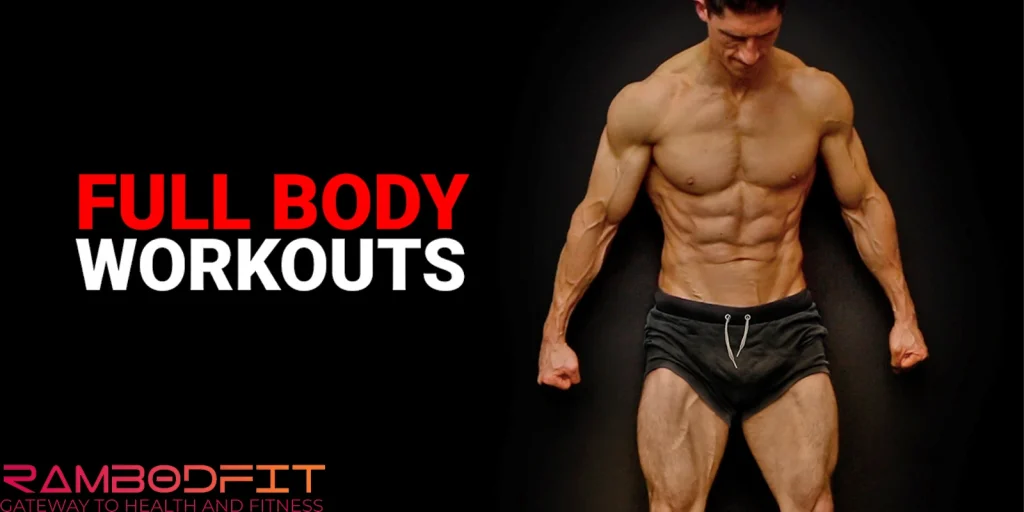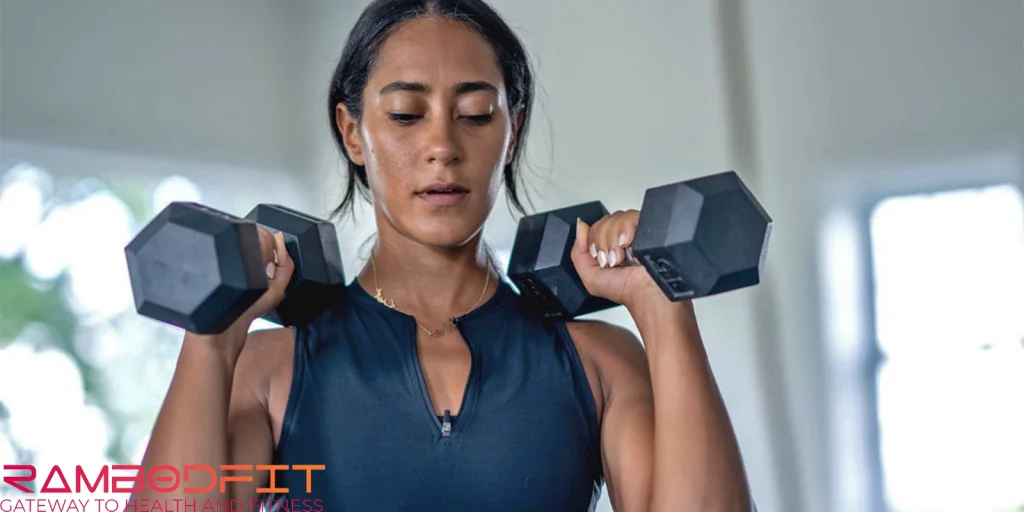


Whenever we want to form an effective workout routine, one of the biggest debates in the fitness world is which one to choose. Full-body or split workouts (also known as muscle group splits). They both have their own pros and cons, and finding the best one for you is highly dependent on your fitness levels, goals, and lifestyle.
Here at RambodFit, we’ll break down the advantages and disadvantages of each approach—backed by science and expert opinion—to help you determine which is best for you.
Table of Contents
Deciding to do full-body or split workouts depends on you and your lifestyle. Here we provide you with the 5 main features that you can consider to choose which one is better for you. Full-Body Or Split Workouts?

A full-body workout targets all the major muscle groups in a single training session. The workouts typically involve compound exercises like squats, deadlifts, bench presses, and rows—exercises that engage more than one muscle at once. Full-body workouts are typically performed 2–4 times a week, with ample recovery time in between.
Benefits of Full-Body Workouts
1. Time-Efficient: it’s perfect for individuals who don’t have a lot of time, as you train all the major muscle groups in a single session, with less necessity to go to the gym on multiple occasions.
2. Higher Calorie Burn: Since compound exercises use more energy, they result in a higher calorie loss both during and after your training session.
3. Functional Strength Gains: The exercises mimic daily movements, promoting overall strength and coordination.
4. Ideal for Beginners: Full-body exercise helps beginners build a solid foundation without becoming confused.
Drawbacks of Full-Body Workouts
1. Fatigue: It can be exhausting to train more than one muscle group at a time, especially when you’re using heavy weights.
2. Insufficient Muscle Isolation: If you’re attempting to build specific muscles (i.e., bigger biceps or calves), full-body workouts may not provide enough isolated volume. Therefore, they aren’t beneficial in that case.

Split workouts divide your workouts based on muscle groups. So, for example, you’d do upper body on Monday, lower body on Wednesday, and arms/core on Friday. This enables greater focus on specific muscles.
Advantages of Split Workouts
1. More Volume per Muscle Group: Since you’re training fewer muscles per session, you can do more exercises for each of them, which provokes and increases hypertrophy (muscle growth).
2. Less Overall Fatigue: Since you’re not training your entire body at once, you can push each muscle group harder without getting exhausted.
3. Tailorable: Split routines can put focus on weak points or specific goals (i.e., bigger arms or stronger legs).
4. Suitable for Experienced Lifters: Trainees with a solid training history will benefit from the increased volume and specialization.
Disadvantages of Split Workouts
1. More Time-Consuming: You need more gym workouts a week in order to be able to effectively target all muscle groups.
2. Less Functional Carryover: Since exercises are done for isolated muscles, they may not carry over to daily movements as much.
3. Possibility of Overtraining: When not programmed appropriately, split routines can lead to overtraining of certain muscles and under-training of others.
The best option for you depends on your fitness level, goals, and time. Here’s a quick guide to decide:
For beginners, the Best option is full-body workouts
For strength training novices, full-body workouts offer a balanced introduction, allowing for even development without over-fatigue. A Journal of Strength and Conditioning Research study determined that novice trainees who trained using full-body workouts three times a week gained more strength and muscle mass than those who used split routines.
Intermediate & Advanced Lifters Best choice: Split workouts
More experienced lifters will benefit from split routines. The European Journal of Applied Physiology released a study that found more experienced trainees gained greater muscle hypertrophy when they employed split routines with greater volume per muscle group.
For Weight Loss, the Best Choice is full-body workouts
Since full-body workouts burn more calories per session, they’re ideal for those who wish to shed fat. The compound exercises involved recruiting several muscles and, in the process, increasing overall energy expenditure.
For Building Muscle (Hypertrophy) Best option: Split workouts
If your primary goal is muscle growth, split routines are generally better because they allow for more volume and intensity per muscle group.
For Busy Athletes, the Best option is full-body workouts
If you have limited time, full-body workouts allow you to train efficiently without needing to go to the gym many times a week.
However, in one study on Springer between untrained A randomized trial on the efficacy of split-body versus full-body resistance training in non-resistance-trained women, did not show any benefits for split-body resistance-training program compared to full-body resistance training program on measures of maximal- and explosive muscle strength, and muscle mass.

Both split and full-body workouts have their own places within a well-rounded fitness regimen. Choose full-body workouts if you’re a novice, short on time, or interested in fat loss and functional strength.
Choose split workouts if you’re an advanced lifter looking to optimize muscle development through elevated training volume.
At the end of the day, the ideal workout routine is one that you can consistently follow. Don’t be afraid to experiment. most lifters find success by incorporating elements of both styles into their routines.
For more practical knowledge about training check the articles below:
Yes! A hybrid routine can be effective. You can do full-body sessions two times weekly and add a split-style session to address weak points. Choosing between Full-Body Or Split Workouts depends on your purpose.
2–4 times weekly suits most people best. Have at least a day’s rest between sessions to allow for good recovery.
Most sessions should take 45–75 minutes, depending on intensity and experience level. But firstly you should know which one is better for you? Full-Body Or Split Workouts?